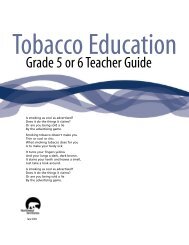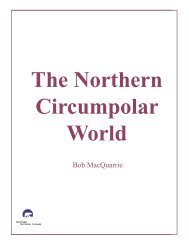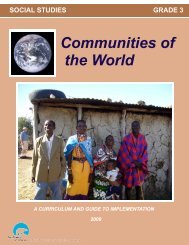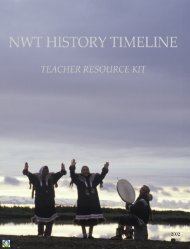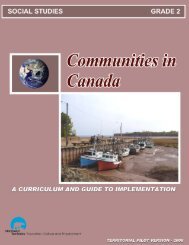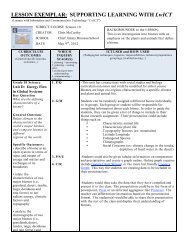Anaphylaxis: A Handbook for School Boards - Education, Culture ...
Anaphylaxis: A Handbook for School Boards - Education, Culture ...
Anaphylaxis: A Handbook for School Boards - Education, Culture ...
Create successful ePaper yourself
Turn your PDF publications into a flip-book with our unique Google optimized e-Paper software.
IntroductionThe Canadian <strong>School</strong> <strong>Boards</strong> Association and Health Canada first published <strong>Anaphylaxis</strong>: A <strong>Handbook</strong> <strong>for</strong><strong>School</strong> <strong>Boards</strong> in 1996. At that time, school boards in Canada were just beginning to <strong>for</strong>malize theirresponse to children with life-threatening allergies by developing policies and procedures to address theirneeds. Five years later, the level of awareness has changed considerably. Two surveys undertaken by theCanadian <strong>School</strong> <strong>Boards</strong> Association in 1999 and 2001 show that more than 80 percent of respondingboards have discussed the issue at the board table, and more than two-thirds have policies in place. Many ofthose policies have relied heavily on the handbook; in fact, a number of school boards require schools to havecopies of the handbook on hand as a reference.Board policies dealing with anaphylaxis range from a brief mention in an overall policy on administration ofmedication to lengthy documents detailing the steps to be taken by all members of the education communityto protect anaphylactic students and to respond to emergency situations. Some boards have developed briefpolicy statements that direct individual schools to establish their own procedures.The revision of the handbook has been undertaken to ensure that the in<strong>for</strong>mation presented reflects thelatest thinking of the medical and legal professions, as well as the actual experience of school boards. Whilemost of the in<strong>for</strong>mation in the 1996 edition remains valid, new board policies developed since that time haveprovided some additional suggestions and insights which have been included as additions to the originaldocument. As well, recent medical research has contributed to a greater understanding of anaphylaxis. Thesection on the legal context has been modified substantially to make it more applicable to school boards.The project has been made possible by funding from Health Canada. It has been supported by anadvisory group of health and legal professionals and other stakeholders, and it has relied heavily on the workof countless trustees, administrators, and school personnel whose work in policy development hascontributed to both the original document and this revised edition.We hope this handbook, like its predecessor, will be a useful tool <strong>for</strong> school boards as they continue tofind ways to provide a safe learning environment <strong>for</strong> children with life-threatening allergies.Although this guidebook makes observations about usual methods of treatment <strong>for</strong> anaphylaxisand suggests guidelines <strong>for</strong> school boards based on those methods, it is not an authoritative medicalresource and should be used as a guide to policy development only. <strong>Anaphylaxis</strong> is a serious, lifethreateningcondition, and establishing treatment protocols must ultimately be the responsibility ofhealth professionals.7



